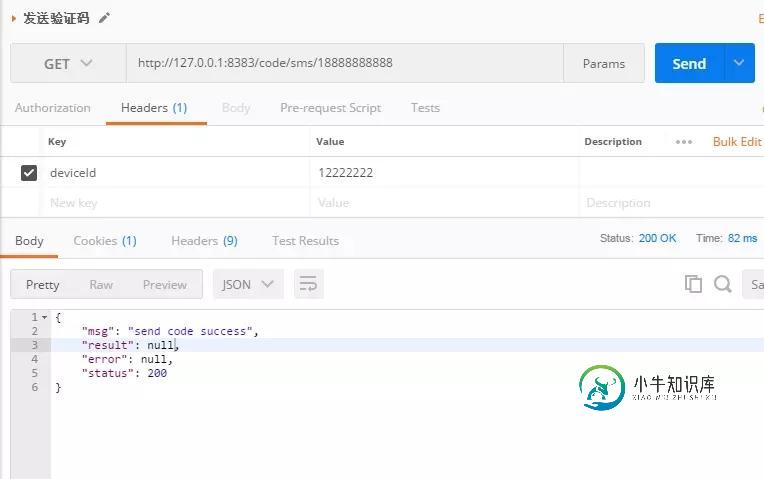spring security自定义认证登录的全过程记录
spring security使用分类:
如何使用spring security,相信百度过的都知道,总共有四种用法,从简到深为:
1、不用数据库,全部数据写在配置文件,这个也是官方文档里面的demo;
2、使用数据库,根据spring security默认实现代码设计数据库,也就是说数据库已经固定了,这种方法不灵活,而且那个数据库设计得很简陋,实用性差;
3、spring security和Acegi不同,它不能修改默认filter了,但支持插入filter,所以根据这个,我们可以插入自己的filter来灵活使用;
4、暴力手段,修改源码,前面说的修改默认filter只是修改配置文件以替换filter而已,这种是直接改了里面的源码,但是这种不符合OO设计原则,而且不实际,不可用。
本文主要介绍了关于spring security自定义认证登录的相关内容,分享出来供大家参考学习,下面话不多说了,来一起看看详细的介绍吧。
1.概要
1.1.简介
spring security是一种基于 Spring AOP 和 Servlet 过滤器的安全框架,以此来管理权限认证等。
1.2.spring security 自定义认证流程
1)认证过程
生成未认证的AuthenticationToken
↑(获取信息) (根据AuthenticationToken分配provider)
AuthenticationFilter -> AuthenticationManager -> AuthenticationProvider
↓(认证)
UserDetails(一般查询数据库获取)
↓(通过)
生成认证成功的AuthenticationToken
↓(存放)
SecurityContextHolder
2)将AuthenticationFilter加入到security过滤链(资源服务器中配置),如:
http.addFilterBefore(AuthenticationFilter, AbstractPreAuthenticatedProcessingFilter.class)
或者:
http.addFilterAfter(AuthenticationFilter, UsernamePasswordAuthenticationFilter.class)
2.以手机号短信登录为例
2.1.开发环境
- SpringBoot
- Spring security
- Redis
2.2.核心代码分析
2.2.1.自定义登录认证流程
2.2.1.1.自定义认证登录Token
/**
* 手机登录Token
*
* @author : CatalpaFlat
*/
public class MobileLoginAuthenticationToken extends AbstractAuthenticationToken {
private static final long serialVersionUID = SpringSecurityCoreVersion.SERIAL_VERSION_UID;
private static final Logger logger = LoggerFactory.getLogger(MobileLoginAuthenticationToken.class.getName());
private final Object principal;
public MobileLoginAuthenticationToken(String mobile) {
super(null);
this.principal = mobile;
this.setAuthenticated(false);
logger.info("MobileLoginAuthenticationToken setAuthenticated ->false loading ...");
}
public MobileLoginAuthenticationToken(Object principal,
Collection<? extends GrantedAuthority> authorities) {
super(authorities);
this.principal = principal;
// must use super, as we override
super.setAuthenticated(true);
logger.info("MobileLoginAuthenticationToken setAuthenticated ->true loading ...");
}
@Override
public void setAuthenticated(boolean authenticated) {
if (authenticated) {
throw new IllegalArgumentException(
"Cannot set this token to trusted - use constructor which takes a GrantedAuthority list instead");
}
super.setAuthenticated(false);
}
@Override
public Object getCredentials() {
return null;
}
@Override
public Object getPrincipal() {
return this.principal;
}
@Override
public void eraseCredentials() {
super.eraseCredentials();
}
}
注:
setAuthenticated():判断是否已认证
- 在过滤器时,会生成一个未认证的AuthenticationToken,此时调用的是自定义token的setAuthenticated(),此时设置为false -> 未认证
- 在提供者时,会生成一个已认证的AuthenticationToken,此时调用的是父类的setAuthenticated(),此时设置为true -> 已认证
2.2.1.1.自定义认证登录过滤器
/**
* 手机短信登录过滤器
*
* @author : CatalpaFlat
*/
public class MobileLoginAuthenticationFilter extends AbstractAuthenticationProcessingFilter {
private boolean postOnly = true;
private static final Logger logger = LoggerFactory.getLogger(MobileLoginAuthenticationFilter.class.getName());
@Getter
@Setter
private String mobileParameterName;
public MobileLoginAuthenticationFilter(String mobileLoginUrl, String mobileParameterName,
String httpMethod) {
super(new AntPathRequestMatcher(mobileLoginUrl, httpMethod));
this.mobileParameterName = mobileParameterName;
logger.info("MobileLoginAuthenticationFilter loading ...");
}
@Override
public Authentication attemptAuthentication(HttpServletRequest request, HttpServletResponse response) throws AuthenticationException, IOException, ServletException {
if (postOnly && !request.getMethod().equals(HttpMethod.POST.name())) {
throw new AuthenticationServiceException("Authentication method not supported: " + request.getMethod());
}
//get mobile
String mobile = obtainMobile(request);
//assemble token
MobileLoginAuthenticationToken authRequest = new MobileLoginAuthenticationToken(mobile);
// Allow subclasses to set the "details" property
setDetails(request, authRequest);
return this.getAuthenticationManager().authenticate(authRequest);
}
/**
* 设置身份认证的详情信息
*/
private void setDetails(HttpServletRequest request, MobileLoginAuthenticationToken authRequest) {
authRequest.setDetails(authenticationDetailsSource.buildDetails(request));
}
/**
* 获取手机号
*/
private String obtainMobile(HttpServletRequest request) {
return request.getParameter(mobileParameterName);
}
public void setPostOnly(boolean postOnly) {
this.postOnly = postOnly;
}
}
注:attemptAuthentication()方法:
- 过滤指定的url、httpMethod
- 获取所需请求参数数据封装生成一个未认证的AuthenticationToken
- 传递给AuthenticationManager认证
2.2.1.1.自定义认证登录提供者
/**
* 手机短信登录认证提供者
*
* @author : CatalpaFlat
*/
public class MobileLoginAuthenticationProvider implements AuthenticationProvider {
private static final Logger logger = LoggerFactory.getLogger(MobileLoginAuthenticationProvider.class.getName());
@Getter
@Setter
private UserDetailsService customUserDetailsService;
public MobileLoginAuthenticationProvider() {
logger.info("MobileLoginAuthenticationProvider loading ...");
}
/**
* 认证
*/
@Override
public Authentication authenticate(Authentication authentication) throws AuthenticationException {
//获取过滤器封装的token信息
MobileLoginAuthenticationToken authenticationToken = (MobileLoginAuthenticationToken) authentication;
//获取用户信息(数据库认证)
UserDetails userDetails = customUserDetailsService.loadUserByUsername((String) authenticationToken.getPrincipal());
//不通过
if (userDetails == null) {
throw new InternalAuthenticationServiceException("Unable to obtain user information");
}
//通过
MobileLoginAuthenticationToken authenticationResult = new MobileLoginAuthenticationToken(userDetails, userDetails.getAuthorities());
authenticationResult.setDetails(authenticationToken.getDetails());
return authenticationResult;
}
/**
* 根据token类型,来判断使用哪个Provider
*/
@Override
public boolean supports(Class<?> authentication) {
return MobileLoginAuthenticationToken.class.isAssignableFrom(authentication);
}
}
注:authenticate()方法
- 获取过滤器封装的token信息
- 调取UserDetailsService获取用户信息(数据库认证)->判断通过与否
- 通过则封装一个新的AuthenticationToken,并返回
2.2.1.1.自定义认证登录认证配置
@Configuration(SpringBeanNameConstant.DEFAULT_CUSTOM_MOBILE_LOGIN_AUTHENTICATION_SECURITY_CONFIG_BN)
public class MobileLoginAuthenticationSecurityConfig extends SecurityConfigurerAdapter<DefaultSecurityFilterChain, HttpSecurity> {
private static final Logger logger = LoggerFactory.getLogger(MobileLoginAuthenticationSecurityConfig.class.getName());
@Value("${login.mobile.url}")
private String defaultMobileLoginUrl;
@Value("${login.mobile.parameter}")
private String defaultMobileLoginParameter;
@Value("${login.mobile.httpMethod}")
private String defaultMobileLoginHttpMethod;
@Autowired
private CustomYmlConfig customYmlConfig;
@Autowired
private UserDetailsService customUserDetailsService;
@Autowired
private AuthenticationSuccessHandler customAuthenticationSuccessHandler;
@Autowired
private AuthenticationFailureHandler customAuthenticationFailureHandler;
public MobileLoginAuthenticationSecurityConfig() {
logger.info("MobileLoginAuthenticationSecurityConfig loading ...");
}
@Override
public void configure(HttpSecurity http) throws Exception {
MobilePOJO mobile = customYmlConfig.getLogins().getMobile();
String url = mobile.getUrl();
String parameter = mobile.getParameter().getMobile();
String httpMethod = mobile.getHttpMethod();
MobileLoginAuthenticationFilter mobileLoginAuthenticationFilter = new MobileLoginAuthenticationFilter(StringUtils.isBlank(url) ? defaultMobileLoginUrl : url,
StringUtils.isBlank(parameter) ? defaultMobileLoginUrl : parameter, StringUtils.isBlank(httpMethod) ? defaultMobileLoginHttpMethod : httpMethod); mobileLoginAuthenticationFilter.setAuthenticationManager(http.getSharedObject(AuthenticationManager.class)); mobileLoginAuthenticationFilter.setAuthenticationSuccessHandler(customAuthenticationSuccessHandler); mobileLoginAuthenticationFilter.setAuthenticationFailureHandler(customAuthenticationFailureHandler);
MobileLoginAuthenticationProvider mobileLoginAuthenticationProvider = new MobileLoginAuthenticationProvider(); mobileLoginAuthenticationProvider.setCustomUserDetailsService(customUserDetailsService);
http.authenticationProvider(mobileLoginAuthenticationProvider)
.addFilterAfter(mobileLoginAuthenticationFilter, UsernamePasswordAuthenticationFilter.class);
}
}
注:configure()方法
实例化AuthenticationFilter和AuthenticationProvider
将AuthenticationFilter和AuthenticationProvider添加到spring security中。
2.2.2.基于redis自定义验证码校验
2.2.2.1.基于redis自定义验证码过滤器
/**
* 验证码过滤器
*
* @author : CatalpaFlat
*/
@Component(SpringBeanNameConstant.DEFAULT_VALIDATE_CODE_FILTER_BN)
public class ValidateCodeFilter extends OncePerRequestFilter implements InitializingBean {
private static final Logger logger = LoggerFactory.getLogger(ValidateCodeFilter.class.getName());
@Autowired
private CustomYmlConfig customYmlConfig;
@Autowired
private RedisTemplate<Object, Object> redisTemplate;
/**
* 验证请求url与配置的url是否匹配的工具类
*/
private AntPathMatcher pathMatcher = new AntPathMatcher();
public ValidateCodeFilter() {
logger.info("Loading ValidateCodeFilter...");
}
@Override
protected void doFilterInternal(HttpServletRequest request, HttpServletResponse response,
FilterChain filterChain) throws ServletException, IOException {
String url = customYmlConfig.getLogins().getMobile().getUrl();
if (pathMatcher.match(url, request.getRequestURI())) {
String deviceId = request.getHeader("deviceId");
if (StringUtils.isBlank(deviceId)) {
throw new CustomException(HttpStatus.NOT_ACCEPTABLE.value(), "Not deviceId in the head of the request");
}
String codeParamName = customYmlConfig.getLogins().getMobile().getParameter().getCode();
String code = request.getParameter(codeParamName);
if (StringUtils.isBlank(code)) {
throw new CustomException(HttpStatus.NOT_ACCEPTABLE.value(), "Not code in the parameters of the request");
}
String key = SystemConstant.DEFAULT_MOBILE_KEY_PIX + deviceId;
SmsCodePO smsCodePo = (SmsCodePO) redisTemplate.opsForValue().get(key);
if (smsCodePo.isExpried()){
throw new CustomException(HttpStatus.BAD_REQUEST.value(), "The verification code has expired");
}
String smsCode = smsCodePo.getCode();
if (StringUtils.isBlank(smsCode)) {
throw new CustomException(HttpStatus.BAD_REQUEST.value(), "Verification code does not exist");
}
if (StringUtils.equals(code, smsCode)) {
redisTemplate.delete(key);
//let it go
filterChain.doFilter(request, response);
} else {
throw new CustomException(HttpStatus.BAD_REQUEST.value(), "Validation code is incorrect");
}
}else {
//let it go
filterChain.doFilter(request, response);
}
}
}
注:doFilterInternal()
自定义验证码过滤校验
2.2.2.2.将自定义验证码过滤器添加到spring security过滤器链
http.addFilterBefore(validateCodeFilter, AbstractPreAuthenticatedProcessingFilter.class)
注:添加到认证预处理过滤器前
3.测试效果




最后附上源码地址:https://gitee.com/CatalpaFlat/springSecurity.git (本地下载)
总结
以上就是这篇文章的全部内容了,希望本文的内容对大家的学习或者工作具有一定的参考学习价值,如果有疑问大家可以留言交流,谢谢大家对小牛知识库的支持。
-
问题内容: 这是我的情况: 一个Web应用程序对许多应用程序执行某种SSO 登录的用户,而不是单击链接,该应用就会向正确的应用发布包含用户信息(名称,pwd [无用],角色)的帖子 我正在其中一个应用程序上实现SpringSecurity以从其功能中受益(会话中的权限,其类提供的方法等) 因此,我需要开发一个 自定义过滤器 -我猜想-能够从请求中检索用户信息,通过自定义 DetailsUserSe
-
springsecurity oauth2.0 谁做过记录登录日志?监听事件好像没法区分是什么原因失败的、比如client错误还是用户名错误
-
本文向大家介绍解析SpringSecurity自定义登录验证成功与失败的结果处理问题,包括了解析SpringSecurity自定义登录验证成功与失败的结果处理问题的使用技巧和注意事项,需要的朋友参考一下 一、需要自定义登录结果的场景 在我之前的文章中,做过登录验证流程的源码解析。其中比较重要的就是 当我们登录成功的时候,是由AuthenticationSuccessHandler进行登录结果处理,
-
Django 自带的认证系统足够应付大多数情况,但你或许不打算使用现成的认证系统。定制自己的项目的权限系统需要了解哪些一些关键点,即Django中哪些部分是能够扩展或替换的。这个文档提供了如何定制权限系统的细节。 “认证”后端 在以下情形时可被扩展:当一个 User 模型对象带有用户名和密码时,且需要有别于 Django 默认的认证功能。 你可为你的模型提供可通过 Django 权限系统检查的 定
-
我们希望使用外部身份提供者将现有的Spring Security项目从自定义用户名/密码实现(UserDetailsService等)迁移到oauth2登录。 但是,当通过外部提供程序登录时,安全上下文中的身份验证对象是一个,主体是一个。 由于我们在应用程序中使用的都是自定义身份验证主体,因此我们希望将转换为自定义对象。 对于oauth2资源服务器,似乎有一个API可让您将JWtAuthentia
-
本文向大家介绍SpringSecurity 默认表单登录页展示流程源码,包括了SpringSecurity 默认表单登录页展示流程源码的使用技巧和注意事项,需要的朋友参考一下 SpringSecurity 默认表单登录页展示流程源码 本篇主要讲解 SpringSecurity提供的默认表单登录页 它是如何展示的的流程, 涉及 1.FilterSecurityInterceptor, 2.Excep

